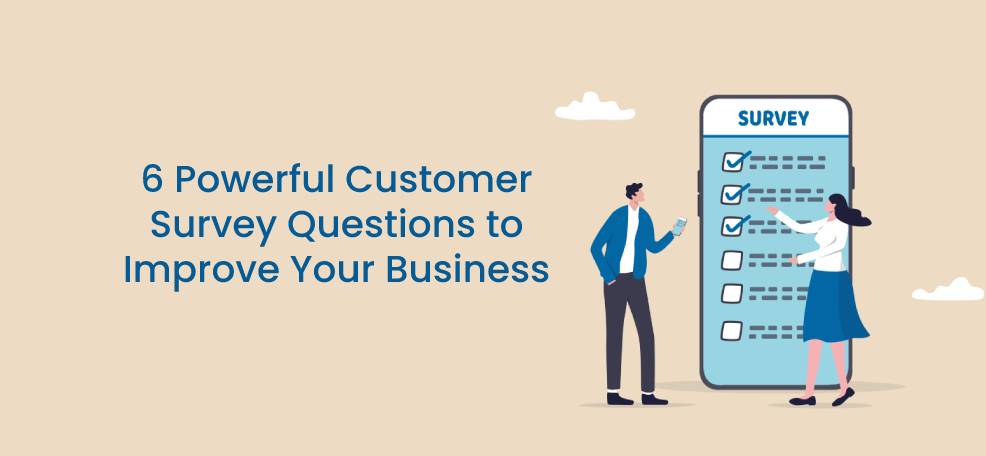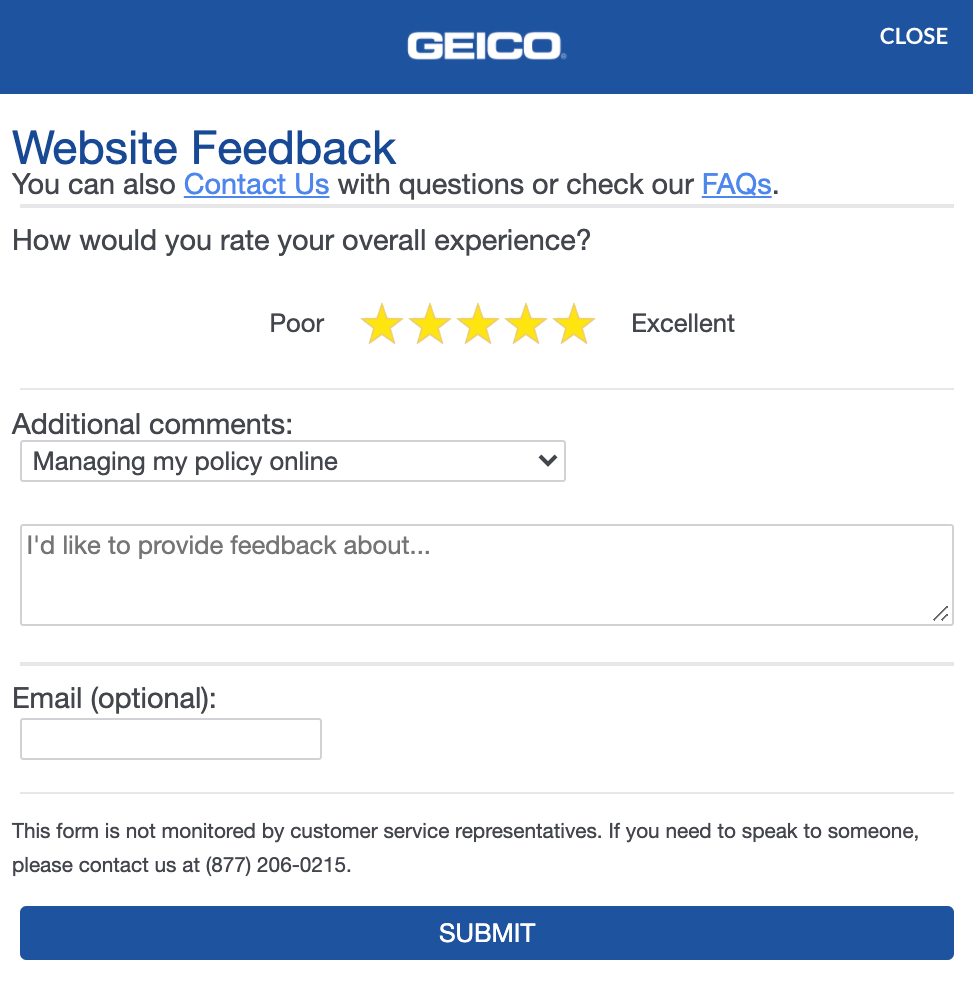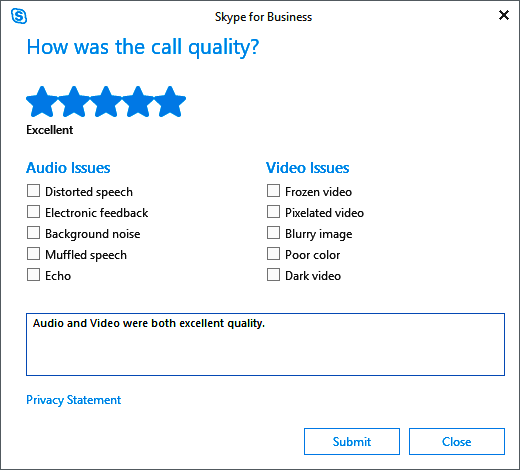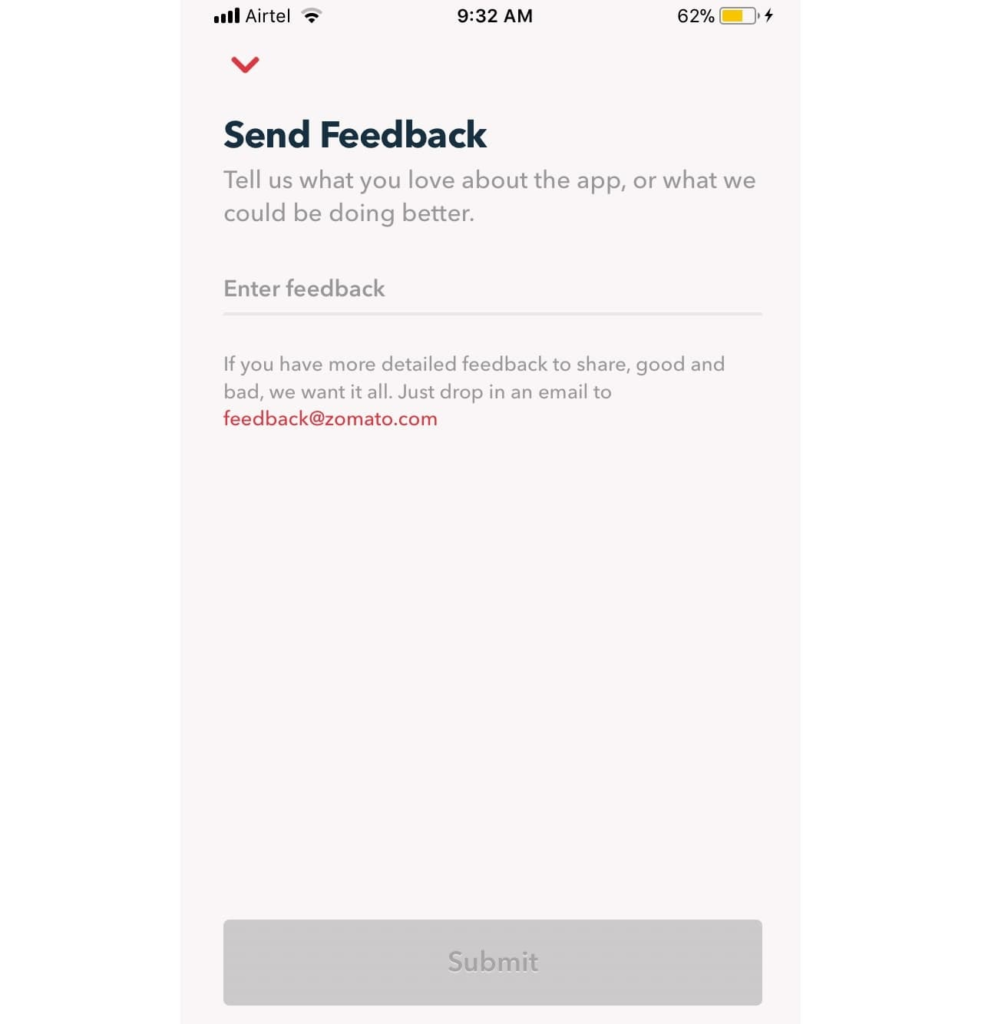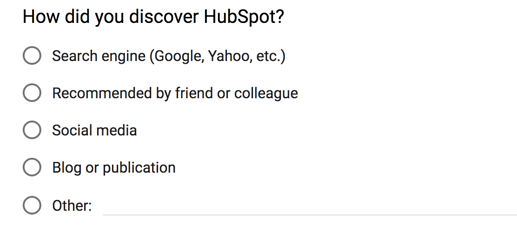Customer feedback is integral to your business. You can use it to improve your offerings and ultimately delight your customers. Customer survey questions are a direct way to gather such constructive feedback.
But you need to create effective customer survey questions to generate this type of data in the first place. Here are some powerful customer survey questions you can ask to help you generate the information you need to improve your business:
Customer Survey Questions
1. How Was Your Buying Experience?
This customer feedback question helps you determine how to improve in the customer experience arena. A possible reason for a dip in your sales could be that the buying process is confusing, making it difficult to buy and driving potential customers away.
Remember, your goal is to make your customer’s overall buying experience more user-friendly. Your customer should have a great experience with every interaction with your company.
Here’s a customer feedback example of a good survey from an online food store, Ecosci. The company makes it easy to answer the questions, too. All customers need to do is pick a rating for every question related to the buying experience that’s asked:
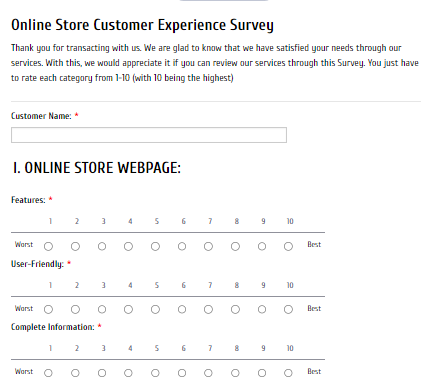
You can also ask for additional information such as your customer’s gender, age, and income bracket to have the data you need to create a buyer persona. The buyer persona comes in handy when the business is crafting targeted content or creating marketing campaigns. It’s one way to hit two birds with one stone.
It can be challenging to ask clients why they are not buying your product/service. Your customers are busy, after all. They don’t like answering long surveys. But you can follow in Ecosci’s footsteps and simplify the survey for your customers.
Also, make it clear to them that their answers will be used to improve the buying process. Once they see that answering the survey can benefit them in the long run, they are more likely to answer.
2. What Was the Biggest Challenge in the Buying Process?
Businesses, whether big SaaS companies or startups, can use surveys to determine customers’ buying journey challenges. That should be your follow-up to the first question above if your customers answer that they weren’t satisfied with their buying experience.
When you ask about your customers’ buying process challenges, you can identify what parts of the customer journey need to change.
Here’s a sample survey from Geico. To make the survey easier to answer, the company made sure to include some options customers could face challenges in:
Geico also gives customers an empty field where they can give additional information. Filling out this field, however, is optional. That only shows that Geico recognizes their customers have busy schedules.
You’d have to send these types of survey questions regularly in customer satisfaction surveys to different sets of customers. You can use a style guide to keep your customer surveys consistent.
3. Are You Satisfied With the Product?
For current customers to become loyal, they need to be satisfied with the product. Even if you think you’ve done your best to create a good product, you still need to ask your customers for feedback. What you think is a great product, after all, may not be so great for them.
Skype runs this survey to help get customer feedback on their product.
Your question can be as simple as, “Are you satisfied with the product?” You can calculate the Customer Satisfaction score (CSAT) on a Likert satisfaction scale by posing the question as a simple pop-up poll. Viable options here would include “Very satisfied,” “Satisfied,” “Neutral,” “Dissatisfied,” and “Very dissatisfied.”
In addition to CSAT, these customer survey questions may help you weigh the Customer Effort Score and the Net Promoter Score. The Customer Effort Score measures how much effort the customer has to put in to use the product or fix a problem with the help of your customer service team. The NPS measures customer loyalty and satisfaction.
But listening to customers is the first step in making them feel valued for lead generation. After this, how you respond to dissatisfied customers and then use your information are critical.
Send the feedback you get to your product development team so they can make the necessary adjustments if the feedback is valid. It’s also best to train your team on how to conduct customer surveys so you can generate as accurate a picture as you can about the customer’s level of satisfaction with your product.
4. What Do You Want Us to Improve in the Product?
After you’ve learned the degree of satisfaction with your product, the next logical step is to ask what can be improved in your product in the first place. This survey question needs an open-ended response for qualitative feedback you can use.
Here’s an example by Zomato, which sent out online surveys to their clients to identify what their customers think can be improved in their app:
That’s not to say you should only ask a general question. In fact, you’ll make it easier for customers to respond to your survey if you break down that general question into these more detailed ones:
- What features of our product do you like?
- What features of our product do you dislike?
- Do you use any of our competitors’ products? If you do, what do you prefer about them? What don’t you like about them?
Alternatively, you can use a survey plugin on your e-commerce website. After getting the feedback, as usual, it’s crucial to analyze survey data as it is and act on the insights.
5. How Did You Hear About Us?
This question shows you where most of your leads and customers come from. That, in turn, allows you to see where your marketing efforts are paying off and where your target groups are hanging out.
Here’s a great example from Hubspot. Customers are asked how they discovered the company. It’s a simple format that gives four possible answers the clients can choose from.
Then there’s a fifth option that ensures the survey covers all possible answers customers may give.
When you ask customers how they heard about you, you can determine which platforms deserve your attention. If you have almost zero leads and customers coming from Facebook, it wouldn’t make sense to launch marketing campaigns there, would it?
6. How Likely Are You to Refer Us to Someone?
The customer’s reluctance or willingness to refer the product is an excellent indicator of the business’s quality of service and product itself. So, it’s only appropriate to ask this in your customer surveys.
Here’s an example from Droplr:
In this survey, customers can rank how likely they are to recommend Droplr on a scale of 0-10. To make it easy for customers to determine what those values mean, qualitative labels–” not at all likely” and “extremely likely”–have been attached to the starting and ending values in the scale.
To optimize the data, follow up with a detailed question such as “What would you say to someone who asked about us?” That will give you an idea of what it is a customer loves or hates about your brand. So, if a customer says they’d tell friends your customer service is lacking, you can focus on training your team and giving them the tools they need to improve your company’s customer service, for example.
It’s most effective to send this customer survey question roughly two weeks to one month from the date of the purchase. Give your customers time to experience your product and service before analyzing the results.
You don’t always have to target returning users with your questionnaire.
You can ask the same survey question to first-time customers, too. That will give you an idea of people’s first impressions of your product or service.
These first impressions are essential since the opinions of people who aren’t your loyal customers just yet are devoid of biases. That means whatever they say is an honest personal assessment of how you’re doing as a brand.
In Closing
Client feedback from customer satisfaction surveys is valuable. But you must ask the right questions in these surveys to get helpful information in the first place.
In this article, we shared six powerful customer satisfaction survey questions you can ask to help you improve your business. You need to ask your customer base about their buying experience, satisfaction with your product, and the specific aspects of the buying experience and your product they’d like to improve.
Also, ask customers how they heard about you. That will allow you to determine the platforms you should focus on. Ask them, too, about the likelihood of them referring your product to someone else. Then follow up with a question that seeks to determine your strengths and weaknesses, allowing you to make adjustments.
Overall, the answers to these questions in customer satisfaction surveys will help you generate the data you need to generate leads, improve the customer experience and increase customer retention. They provide insights that can take your business to the next level.
Create survey pop ups with Poptin for free. Sign up here!
Author Bio: By Ashish Gupta, former Tech Lead for Machine Learning at Google AdWords (6 years) and a quant developer on Wall Street. Co-Founder & CEO of Polymer Search, the first no-code solution to make structured data more accessible.
